Structural testing is an integral part of the modern construction industry, whether it be proving individual components or materials are fit for purpose or load testing novel or existing structures.

Structural Testing
Create tightly integrated yet cost-efficient civil structural and component test stands that can be easily reconfigured to meet evolving requirements. Precision-engineered to the highest quality and designed for seamless integration, test system components are the same as those used in the most advanced custom rigs.
Applications:
Performance, Durability, Bend, Dynamic Testing, Quasi-static
Test Specimens:
Civil Structures, Substructures, Structural Components, Building Materials

Actuator
Conduct high-force, six degree-of-freedom (6DOF) quasi-static and dynamic testing of beam-column frame systems, walls, bridge piers, abutments and more to the point of failure in controlled laboratory settings. This high-capacity test system provides researchers the data needed to improve design codes and develop next generation building materials, components and structures.
Applications:
Quasi-static, Dynamic Testing, Seismic Simulation, Time-History Simulation
Test Specimens:
Substructures, Components, Building Materials, Civil Structures, Sub-Assemblies
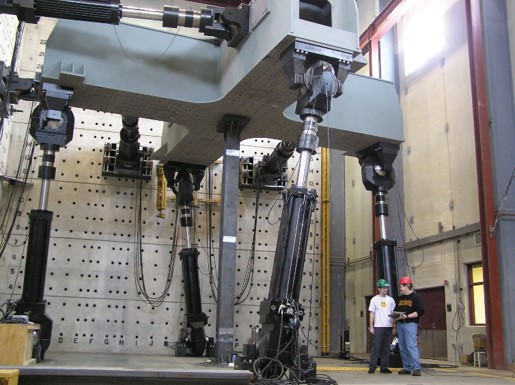
Actuator
Compression is a fundamental type of test used to characterize building materials in construction industry. Static compression tests apply an escalating compressive load until failure or apply a specific load and hold it for a certain period. Dynamic compression tests involve cycling between two (or more) load conditions. Depending on the nature of the specimen, compression tests can help determine the material’s ultimate yield strength, service life or other critical performance characteristics.
Our complete solutions for building materials compression test include
- Highly stiff, floor-standing servo hydraulic load frames for a range of force requirements
- Tabletop and floor-standing electromechanical load frames for varying force requirements
- Intuitive, versatile and user-friendly software with powerful test design capabilities
- Digital controllers with high channel density, high capacity and superior configurability
- Broad selection of fixturing (platens) to accommodate different type specimen types
Test Standard
BS EN 12390-3, BS EN 12504-1, BS EN 196-1, BS EN 12190, BS EN 12808-3, BS EN 1015-11, BS EN 480-1, BS EN 772-1, BS 1377-7, BS 4551-1, BS 6717-1, ASTM C109, ASTM C942, ASTM C349, ASTM C579, ASTM C1693-11, ASTM C170, ASTM D1633, SS 103
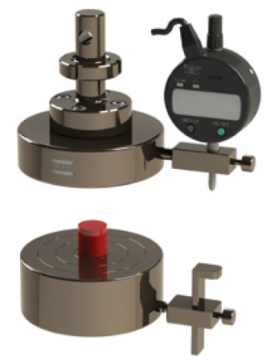
Compression

Concrete Strength Test
The performance of walls, columns, floors and other building elements when exposed to fire conditions is of extreme importance in insuring safety to both the public and neighbouring structures. In order to acquire information on this performance, it is necessary to measure the fire-resistive properties of the materials and assemblies.
Fire Resistance Test Furnace for Vertical and Horizontal Test Specimens is the apparatus needed to evaluate the fire resistance of a horizontal or vertical construction assembly, column, or support, and provides a method of quantifying the ability of products such as doors and dampers, and building materials to withstand exposure to high temperatures. This is done by evaluating a number of performance elements such as; the load-bearing capacity, the ability to provide fire containment and the thermal transmittance of the materials and systems.
Building elements commonly tested include:
Fire Doors, Load Bearing Panel, Walls, Ventilation Ducts, Columns, Cable Barriers, Partitions. Dampers
Type of Furnaces
- Large Horizontal Scale Fire Resistance Test Furnace
- Large Vertical Scale Fire Resistance Test Furnace
- Hydraulic Tilting Fire Resistance Test Furnace
- Indicative Fire Resistance Test Furnace
- Miniature Fire Resistance Test Furnace
Test Standard
ISO 834 (1,4,8) – BS 476 (20 – 22) – BS EN 1363 (1-2) – BS EN 1364 (1) – BS EN 1365 (1) – BS EN 1366 (1-3) – BS EN 1634 -1 – ASTM E 119 – ASTM E 814 – UL 10 (B-C) – UL 263 – UL 1709 – UL 1479 – UL 2079 – ISO 3008 – ISO 3009
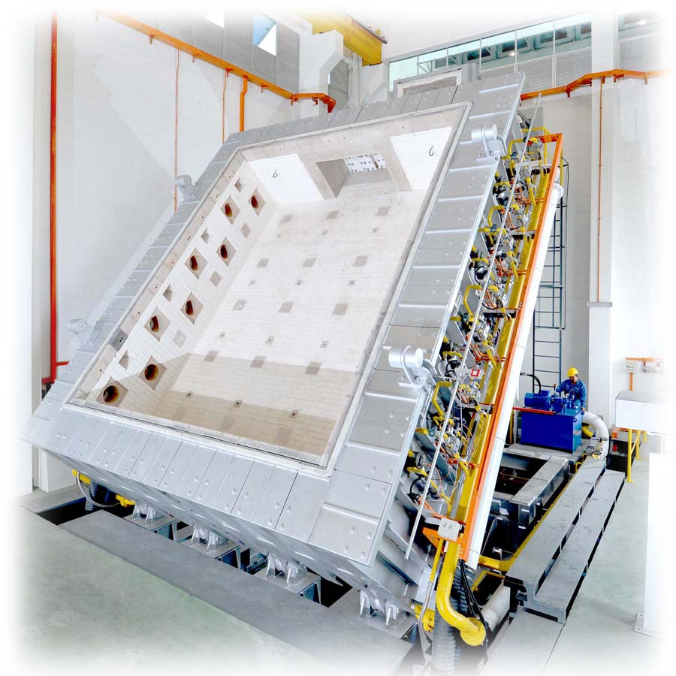
Fire Resistance

Fire Resistance
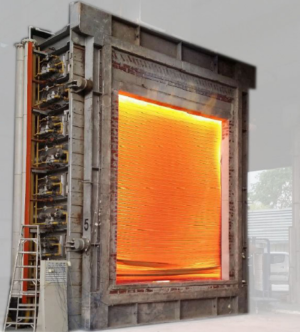
Fire Resistance
Non-Combustibility Apparatus determines the non-combustibility performance, under specific conditions, of homogenous products and substantial components of nonhomogeneous building products. This test is part of the requirements of the construction products regulation classification of reaction to fire performance for wall lining and roofing products and floorcoverings.
EN ISO 1182 Regulation classification criteria for all building products, has performance classes from AF. Although another test is required for assessment, the non-combustibility apparatus is needed for qualifying all types of construction products to the highest performance criteria – A1 and A1fl (non-combustible). The classification criteria is shown in the table below. This principally applies to nonorganic materials.
The classification criteria is shown in the table below. This principally applies to non-organic materials.
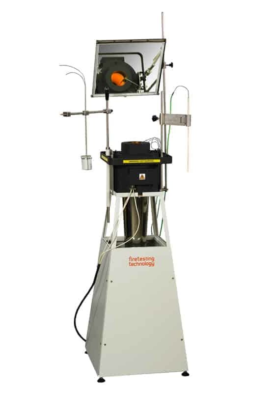
Non-Combustibility
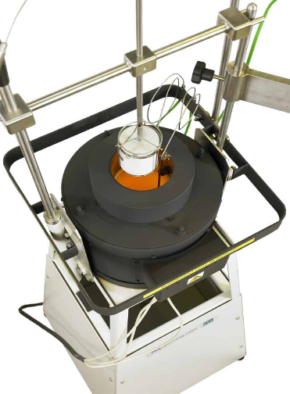
Non-Combustibility
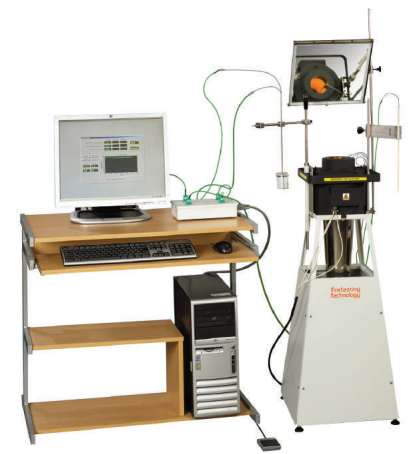
Non-Combustibility
The bomb calorimeter is the most common device for measuring the heat of combustion or calorific value of a material. With this apparatus a test specimen of specified mass is burned under standardized conditions.
The heat of combustion determined under these conditions is calculated based on the observed temperature rise while taking account of heat loss. The combustion process is initiated inside an atmosphere of oxygen in a constant volume container, the bomb, which is a vessel built to withstand high pressures. It is immersed in a stirred water bath, and the whole device is the calorimeter vessel. The calorimeter vessel is also immersed in an outer water bath. The water temperature in the calorimeter vessel and that of the outer bath are both monitored.
The Oxygen Bomb Calorimeter can be used to measure the heat generated from several applications and has been designed to conform to current ASTM, ISO, EN, BS and DIN international standards.
The calorific value of the following groups of materials can be measured
- Building materials (EN ISO 1716)
- Coal, coke (ASTM D5865)
- Fuel (ASTM D240: gasoline, kerosene, fuel oil, Nos. 1D and 2D diesel fuel and Nos. 0GT, 1GT, and 2GT gas turbines fuels and ISO 1928)
- Fuel derived from waste material (ASTM E711)
- Hydrocarbon fuels (ASTM D4809)
- Food, supplements, crops
- Waste and refuse
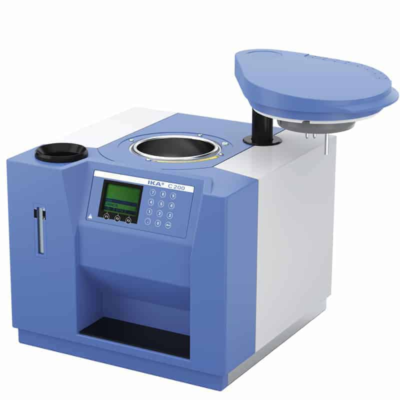
Calorimeter
Most construction products need to be tested and classified using a new test method called the Single Burning Item (the SBI) EN 13823. The construction products directive of the European commission will require that all European Member states eventually use this, instead of the traditional regulatory methods used in each country, to classify most building products.
The Commission recently defined the criteria for assessing building products into classes A-F. These are given in the table below. Though other test methods are required the SBI is needed to classify all non flooring products into the classes A2, B, C and D which are the major classes inhabited by most products other than those that are principally inorganic classified as non-combustible.
The Single Burning Item (SBI), is a method of test for determining the reaction to fire behaviour of building products (excluding floorings) when exposed to the thermal attack by a single burning item (a sand-box burner supplied with propane). The specimen is mounted on a trolley that is positioned in a frame beneath an exhaust system. The reaction of the specimen to the burner is monitored instrumentally and visually. Heat and smoke release rates are measured instrumentally, and physical characteristics are assessed by observation
The calorific value of the following groups of materials can be measured
- Building materials (EN ISO 1716)
- Coal, coke (ASTM D5865)
- Fuel (ASTM D240: gasoline, kerosene, fuel oil, Nos. 1D and 2D diesel fuel and Nos. 0GT, 1GT, and 2GT gas turbines fuels and ISO 1928)
- Fuel derived from waste material (ASTM E711)
- Hydrocarbon fuels (ASTM D4809)
- Food, supplements, crops
- Waste and refuse
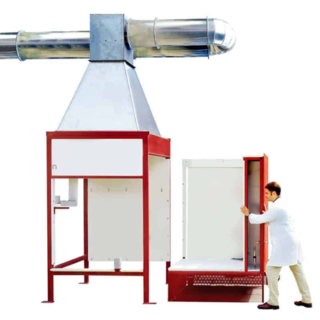
SBI

SBI


